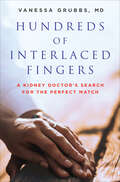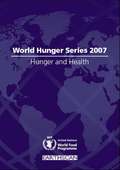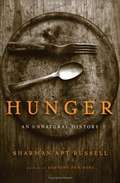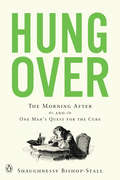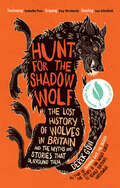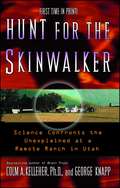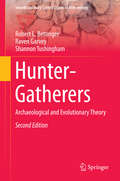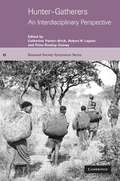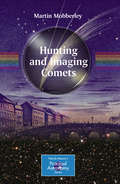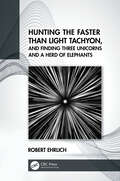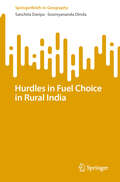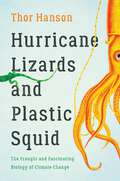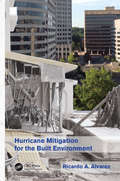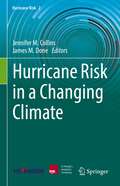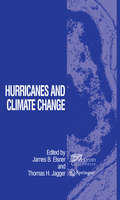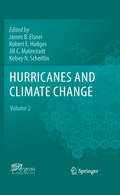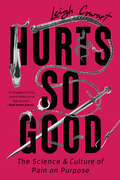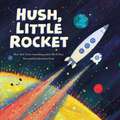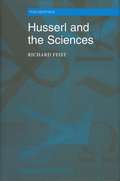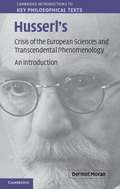- Table View
- List View
Hundreds of Interlaced Fingers: A Kidney Doctor's Search for the Perfect Match
by Vanessa GrubbsA doctor shares her unforgettable love story & informative journey into the world of medicine in this “thoughtful and endearing” memoir (Washington Post).When Vanessa met Robert, she had no idea that their relationship would thoroughly transform her life. Robert was suffering from end-stage kidney disease, which required him to endure years of debilitating dialysis in order to stay alive, at least until his failed organ could be replaced by a kidney transplant. Although Vanessa was a primary care doctor, she developed a deeper understanding of the difficulties Robert faced, including dialysis and finding a donor. So, even though they were still in the early stages of their relationship, she volunteered one of her own kidneys for testing and discovered that she was a match. This life-affirming donation forged a bond that would become a pillar of Vanessa and Robert’s marriage—and the beginning of a new career.Motivated by Robert’s experience and her newfound knowledge, Vanessa became a nephrologist—a kidney doctor—and discovered far more about the realities of the specialty. Shaped by Vanessa’s remarkable expertise as a doctor, a woman of color, a mother, and a kidney donor, Hundreds of Interlaced Fingers is a love story as well as an informative guide to kidney disease.Praise for Hundreds of Interlaced Fingers“A story told beautifully, courageously, and honestly. You’ll never forget Vanessa and Robert, and you’ll never view medicine quite the same way again.” —Robert Winchester, MD, author of the New York Times–bestseller The Digital Doctor“Intense, ambitious, and fascinating.” —Victoria Sweet, MD, award–winning author of God’s Hotel
Hungarian Psychiatry, Society and Politics in the Long Nineteenth Century (Mental Health in Historical Perspective)
by Emese LaffertonThis book provides the first comprehensive study of the history of Hungarian psychiatry between 1850 and 1920, placed in both an Austro-Hungarian and wider European comparative framework. Taking an interdisciplinary approach, the book captures the institutional worlds of the different types of psychiatric institutions intertwined with the intellectual history of mental illness and the micro-historical study of everyday institutional practice. It uncovers the ways in which psychiatrists gradually organised themselves and their profession, defined their field and role, claimed expertise within the medical sciences, lobbied for legal reform and the establishment of psychiatric institutions, fought for university positions, the establishment of departments and specialised psychiatric teaching. Beyond this story of increasing professionalization, this study also explores how psychiatry became invested in social critique. It shows how psychiatry gradually moved beyond its closely defined disciplinary borders and became a public arena, with psychiatrists broadening their focus from individual patients to society at large, whether through mass publications or participation in popular social movements. Finally, the book examines how psychiatry began to influence the concept of mental health during the first decades of the twentieth century, against the rich social and cultural context of fin-de-siècle Budapest and the Austro-Hungarian Dual Monarchy.
Hunger and Health: World Hunger Series 2007
by United Nations World Food ProgrammeHunger and Health explores the multiple relationships between hunger and poor health, and how they affect the growth of individuals, physiologically and psychologically, constraining the development of nations both socially and economically. Examining the profound effect that hunger has on health, including disease prevention and treatment, it gives special attention to access to quality food and healthcare, in particular for the marginalized and poor. It also identifies critical junctures in the human life cycle when the benefits of reducing hunger and improving poor health have a profound impact. It demonstrates how aligning of hunger and health interventions can offer proven solutions that reach those most in need, and contains compelling evidence which confirms that hunger and poor health are solvable problems today. It encourages those involved in policy, programming and advocacy to take action to address some of the most urgent hunger and health problems. Essential reading for anyone concerned about eliminating hunger. Published with the UN World Food Programme.
Hunger: An Unnatural History
by Sharman Apt RussellA subject as big as history and as everyday as skipping lunch -- how does hunger work? -- is explored in this thought-provoking, kaleidoscopic blend of science, anthropology, and personal reflection.
Hungover: The Morning After and One Man's Quest for the Cure
by Shaughnessy Bishop-Stall"An engrossing, hilarious, and sometimes painful tour through the history and science of the morning after." —Bianca Bosker, author of Cork Dork One intrepid reporter's quest to learn everything there is to know about hangovers, trying all of the cures he can find and explaining how (and if) they work, all so rest of us don't have to.We've all been there. One minute you're fast asleep, and in the next you're tumbling from dreams of deserts and demons, into semi-consciousness, mouth full of sand, head throbbing. You're hungover. Courageous journalist Shaughnessy Bishop-Stall has gone to the front lines of humanity's age-old fight against hangovers to settle once and for all the best way to get rid of the aftereffects of a night of indulgence (short of not drinking in the first place).Hangovers have plagued human beings for about as long as civilization has existed (and arguably longer), so there has been plenty of time for cures to be concocted. But even in 2018, little is actually known about hangovers, and less still about how to cure them. Cutting through the rumor and the myth, Hungover explores everything from polar bear swims, to saline IV drips, to the age-old hair of the dog, to let us all know which ones actually work. And along the way, Bishop-Stall regales readers with stories from humanity's long and fraught relationship with booze, and shares the advice of everyone from Kingsley Amis to a man in a pub.
Hunt for the Shadow Wolf [US Edition]: The lost history of wolves in Britain and the myths and stories that surround them
by Derek Gow"Terrific, life-lit moments come howling out of Hunt for the Shadow Wolf."—The Telegraph "[Derek Gow is] a wry, profane truth teller who is equal parts yeoman farmer, historical ecologist, and pirate."—Ben Goldfarb, author of Eager and Crossings "Beautifully crafted, fascinating and unbearably poignant, I totally loved this book."—Isabella Tree, author of Wilding Renowned rewilder Derek Gow has a dream: that one day we will see the return of the wolf to Britain as it has already returned elsewhere. As Derek worked to reintroduce the beaver, he began to hear stories of the wolf, both real and mythical, and his fascination with this creature grew. With increasing curiosity, Derek started to piece together fragments of information, stories and artefacts to reveal a shadowy creature that first walked proud through these lands and then was hunted to extinction as coexistence turned to fear, hatred – and domination. What Derek came to realize was that the underlying motives behind our hatred were actually far more prosaic and, like most persecutions, to do with power and profit. We turned the wolf into a savage beast and saw its extirpation as a civilizing mission. But the wolf survived far longer than many thought and Derek tells of his sightings of the wolf through folklore and mythology, the records of grand estates and parish churches as well as wolf heads, both real and recreated. With bitingly funny but also tender stories, Hunt for the Shadow Wolf is Derek’s quest to uncover the true nature of this creature because, as we seek to heal our landscape, we must reconcile our relationship with it. Before we can even begin to bring the wolf back, we need to understand it. "I have loved this chase dearly and though what unfolds might be an ending of sorts, I have no intention to let this hunt cease."―Derek Gow, from Hunt for the Shadow Wolf "Gow reinvents what it means to be a guardian of the countryside."—The Guardian
Hunt for the Skinwalker: Science Confronts the Unexplained at a Remote Ranch in Utah
by Colm A. Kelleher George KnappThe author of the controversial bestseller Brain Trust brings his scientific expertise to the chilling true story of unexplained phenomena on Utah's Skinwalker Ranch -- and challenges us with a new vision of reality. For more than fifty years, the bizarre events at a remote Utah ranch have ranged from the perplexing to the wholly terrifying. Vanishing and mutilated cattle. Unidentified Flying Objects. The appearance of huge, otherworldly creatures. Invisible objects emitting magnetic fields with the power to spark a cattle stampede. Flying orbs of light with dazzling maneuverability and lethal consequences. For one family, life on the Skinwalker Ranch had become a life under siege by an unknown enemy or enemies. Nothing else could explain the horrors that surrounded them -- perhaps science could. Leading a first-class team of research scientists on a disturbing odyssey into the unknown, Colm Kelleher spent hundreds of days and nights on the Skinwalker property and experienced firsthand many of its haunting mysteries. With investigative reporter George Knapp -- the only journalist allowed to witness and document the team's work -- Kelleher chronicles in superb detail the spectacular happenings the team observed personally, and the theories of modern physics behind the phenomena. Far from the coldly detached findings one might expect, their conclusions are utterly hair-raising in their implications. Opening a door to the unseen world around us, Hunt for the Skinwalker is a clarion call to expand our vision far beyond what we know.
Hunter-Gatherers
by Robert L. Bettinger Raven Garvey Shannon TushinghamHunter-gatherer research has played a historically central role in the development of anthropological and evolutionary theory. Today, research in this traditional and enduringly vital field blurs lines of distinction between archaeology and ethnology, and seeks instead to develop perspectives and theories broadly applicable to anthropology and its many sub disciplines. In the groundbreaking first edition of Hunter-Gatherers: Archaeological and Evolutionary Theory (1991), Robert Bettinger presented an integrative perspective on hunter-gatherer research and advanced a theoretical approach compatible with both traditional anthropological and contemporary evolutionary theories. Hunter-Gatherers remains a well-respected and much-cited text, now over 20 years since initial publication. Yet, as in other vibrant fields of study, the last two decades have seen important empirical and theoretical advances. In this second edition of Hunter-Gatherers, co-authors Robert Bettinger, Raven Garvey, and Shannon Tushingham offer a revised and expanded version of the classic text, which includes a succinct and provocative critical synthesis of hunter-gatherer and evolutionary theory, from the Enlightenment to the present. New and expanded sections relate and react to recent developments--some of them the authors' own--particularly in the realms of optimal foraging and cultural transmission theories. An exceptionally informative and ambitious volume on cultural evolutionary theory, Hunter-Gatherers, second edition, is an essential addition to the libraries of anthropologists, archaeologists, and human ecologists alike.
Hunter-Gatherers: An Interdisciplinary Perspective
by Catherine Panter-Brick Robert H. Layton Peter Rowley-ConwyAnalyses of the ecology, biology and society of past and present-day hunter-gatherers are at the core of this interdisciplinary volume. Since the seminal work of Man the Hunter in 1968, new research in these three areas has become increasingly specialized, and the lines of communication among academic disciplines have all but broken down. This volume aims to reestablish an interdisciplinary debate, presenting critical issues commanding an ongoing interest in hunter-gatherer research, covering the evolution and history, demography, biology, technology, social organization, art, and language of diverse groups. As a reference text, this book will be useful to scholars and students of social anthropology, archaeology, biological anthropology, and human sciences.
Hunting and Imaging Comets
by Martin MobberleyFor many astronomers, the holy grail of observation is to discover a comet, not least because comets always bear the name of their discoverer! Hunting and Imaging Comets was written for comet hunters and digital imagers who want to discover, rediscover, monitor, and make pictures of comets using astronomical CCD cameras and DSLRs. The old days of the purely visual comet hunter are pretty much over, but this is not to say that amateurs have lost interest in finding comets. The books also covers the discovery of comet fragments in the SOHO image data, CCD monitoring of older comets prone to violent outbursts, the imaging of new NEOs (Near Earth Objects) that have quite often been revealed as comets - not asteroids - by amateur astronomers, and the finding of recent comets impacting Jupiter.
Hunting the Faster than Light Tachyon, and Finding Three Unicorns and a Herd of Elephants
by Robert EhrlichIn 1905, Albert Einstein declared speeds greater than light to be impossible. This book describes the author’s decades-long search for the hypothetical subatomic particles known as tachyons that violate this principle. This book is a scientific detective story. The crime is speeding—that is, the possible breaking of the cosmic speed limit, namely the speed of light, as stipulated by Einstein. This detective story is also a memoir written by a member of a band of "tachyon hunters." The author’s pursuit of tachyons has been met with skepticism from most physicists, who note correctly that no such superluminal particles have ever been surely observed and that there have been many false sightings. Nevertheless, considerable circumstantial evidence for tachyons has already been published and an ongoing experiment could decide the issue in the next few years. This book is written for the general reader, containing humor and eliminating jargon whenever possible, and will also be of interest to scientists. The hunt for the tachyon will fascinate all readers who approach the study of physics with curious and open minds.
Hurdles in Fuel Choice in Rural India (SpringerBriefs in Geography)
by Soumyananda Dinda Sanchita DaripaThis Springer Brief presents a study that aims to identify the demand for cooking fuel at household level under different socio-economic conditions in rural India, with the goal of offering recommendations to reformulate and redesign energy policy. Households’ fuel choice and level of fuel consumption contribute to efforts toward sustainable development in emerging economy like India. In this context, it is important to identify the determining factors of fuel choice and consumption decision for cooking purpose at household level. Earlier studies mainly focused on fuel price and household income determining domestic fuel consumption, and insufficient attention has been given to other socioeconomic factors and decision processes for fuel choice. In this Brief, the double hurdle model is used to estimate the hurdles in fuel demand and its determinants at the household level in rural India.
Hurricane Lizards and Plastic Squid: The Fraught and Fascinating Biology of Climate Change
by Thor HansonA beloved natural historian explores how climate change is driving evolution In Hurricane Lizards and Plastic Squid, biologist Thor Hanson tells the remarkable story of how plants and animals are responding to climate change: adjusting, evolving, and sometimes dying out. Anole lizards have grown larger toe pads, to grip more tightly in frequent hurricanes. Warm waters cause the development of Humboldt squid to alter so dramatically that fishermen mistake them for different species. Brown pelicans move north, and long-spined sea urchins south, to find cooler homes. And when coral reefs sicken, they leave no territory worth fighting for, so aggressive butterfly fish transform instantly into pacifists. A story of hope, resilience, and risk, Hurricane Lizards and Plastic Squid is natural history for readers of Bernd Heinrich, Robin Wall Kimmerer, and David Haskell. It is also a reminder of how unpredictable climate change is as it interacts with the messy lattice of life.
Hurricane Mitigation for the Built Environment
by Ricardo A. Alvarez"Alvarez drives home the point that for buildings and communities located in hurricane-prone regions, it is not a question of whether the area will be impacted, but when it will be impacted. The book makes a strong case for taking responsibility to understand the vulnerabilities of buildings and structures to hurricane impacts." Timothy Reinhold, P
Hurricane Risk in a Changing Climate (Hurricane Risk #2)
by Jennifer M. Collins James M. DoneHow is a changing climate affecting hurricanes, and how are these changes intersecting with our changing exposure and vulnerability in ways that affect tropical cyclone risk? Crucially, how should this understanding be incorporated into risk management practice? This book takes a cross-sectoral look at how damaging tropical cyclone characteristics are changing and presents novel approaches to integrate science with risk assessment. In this new era of tropical cyclone impacts, understanding effective risk management practice in a changing climate is more important than ever.This book details the outcomes of new research focusing on climate risk related to hurricanes in a changing climate. Topics include characteristics of tropical cyclone risk, perspectives on hurricane risk management strategies in the built environment, and implications for commercial risk. Inspired by the Symposium on Hurricane Risk in a Changing Climate, this book brings together leading international academics and researchers, and provides a source reference for both risk managers and climate scientists for research on the interface between tropical cyclones, climate, and risk.8 chapters are available open access under a Creative Commons Attribution 4.0 International License via link.springer.com.
Hurricanes and Climate Change
by James B. Elsner Thomas H. JaggerRecent studies suggest that tropical cyclones are more powerful than in the past with the most dramatic increase in the North Atlantic. The increase is correlated with an increase in ocean temperature. A debate concerns the nature of these increases with some scientists attributing them to a natural climate fluctuation and others suggesting climate change related to anthropogenic increases in forcing from greenhouse gases. A Summit on Hurricanes and Climate Change was held during the spring of 2007 on the island of Crete that brought together leading academics and researchers on both sides of the scientific debate to discuss new research and express opinions about what will happen in the future with regard to hurricane activity. This proceedings volume highlights the state-of-the-science research into various aspects of the hurricane-climate connection. It is likely that the science presented here will lead to new research that will help answer crucial questions about our sustainable future.
Hurricanes and Climate Change
by James B. Elsner Robert E. Hodges Kelsey N. Scheitlin Jill C. MalmstadtHurricanes are nature's most destructive agents. Widespread interest surrounds the possibility that they might get even more destructive in the future. Policy makers consider it a call for action. Answers about when and by how much hurricanes will change are sought by financial institutions especially industry. And scientists are challenged by the range and interactions of the processes involved. This book, arising from the 2nd International Summit on Hurricanes and Climate Change, contains new research on topics related to hurricanes and climate change since the 1st Summit. Chapters are grouped into research studies using global climate models and those taking empirical and statistical approaches. The latter include investigations of basin-wide and regional hurricane activity.
Hurricanes: Extreme Weather (Theme Sets)
by Josie GreenAn introduction to hurricanes with information on how they begin, when and where they occur, the damage they can do, and some of the worst storms of this century.
Hurts So Good: The Science and Culture of Pain on Purpose
by Leigh CowartAn exploration of why people all over the world love to engage in pain on purpose--from dominatrices, religious ascetics, and ultramarathoners to ballerinas, icy ocean bathers, and sideshow performersMasochism is sexy, human, reviled, worshipped, and can be delightfully bizarre. Deliberate and consensual pain has been with us for millennia, encompassing everyone from Black Plague flagellants to ballerinas dancing on broken bones to competitive eaters choking down hot peppers while they cry. Masochism is a part of us. It lives inside workaholics, tattoo enthusiasts, and all manner of garden variety pain-seekers. At its core, masochism is about feeling bad, then better—a phenomenon that is long overdue for a heartfelt and hilarious investigation. And Leigh Cowart would know: they are not just a researcher and science writer—they&’re an inveterate, high-sensation seeking masochist. And they have a few questions: Why do people engage in masochism? What are the benefits and the costs? And what does masochism have to say about the human experience? By participating in many of these activities themselves, and through conversations with psychologists, fellow scientists, and people who seek pain for pleasure, Cowart unveils how our minds and bodies find meaning and relief in pain—a quirk in our programming that drives discipline and innovation even as it threatens to swallow us whole.
Hush, Little Rocket
by Mo O'HaraBedtime goes out of this world with Hush, Little Rocket, a new picture book by New York Times-bestselling author Mo O’Hara!Hush, Little Rocket, don’t make a bleep.We’re heading home now, it’s time to sleep.At the end of a very long day soaring around the galaxy, send your little rocket to sleep with this celestial lullaby sung to the tune of “Hush Little Baby.” Starting at the long, yellow flares of the sun and coming home to a launchpad on Neptune’s largest moon, this gentle bedtime flight will introduce readers to the solar system while lulling them into a slumber full of cosmic dreams. Sweeping illustrations by Alexandra Cook bring the Milky Way to life, and backmatter provides more planetary facts for your curious stargazer. Perfect for tiny astronauts!
Husserl And The Promise Of Time: Subjectivity In Transcendental Phenomenology
by Nicolas De WarrenThis book is the first extensive treatment of Husserl's phenomenology of time-consciousness. Nicolas de Warren uses detailed analysis of texts by Husserl, some only recently published in German, to examine Husserl's treatment of time-consciousness and its significance for his conception of subjectivity. He traces the development of Husserl's thinking on the problem of time from Franz Brentano's descriptive psychology, and situates it in the framework of his transcendental project as a whole. Particular discussions include the significance of time-consciousness for other phenomenological themes: perceptual experience, the imagination, remembrance, self-consciousness, embodiment, and the consciousness of others. The result is an illuminating exploration of how and why Husserl considered the question of time-consciousness to be the most difficult, yet also the most central, of all the challenges facing his unique philosophical enterprise.
Husserl and the Sciences: Selected Perspectives (Philosophica)
by Richard FeistEdmund Husserl (1859-1938) is one of the previous century's most important thinkers. Often regarded as the "Father of phenomenology," this collection of essays reveals that he is indeed much more than that. The breadth of Husserl's thought is considerable and much remains unexplored. An underlying theme of this volume is that Husserl is constantly returning to origins, revising his thought in the light of new knowledge offered by the sciences.
Husserl'S Crisis of the European Sciences and Transcendental Phenomenology
by Dermot MoranThe Crisis of the European Sciences is Husserl's last and most influential book, written in Nazi Germany where he was discriminated against as a Jew. It incisively identifies the urgent moral and existential crises of the age and defends the relevance of philosophy at a time of both scientific progress and political barbarism. It is also a response to Heidegger, offering Husserl's own approach to the problems of human finitude, history and culture. The Crisis introduces Husserl's influential notion of the 'life-world' – the pre-given, familiar environment that includes both 'nature' and 'culture' – and offers the best introduction to his phenomenology as both method and philosophy. Dermot Moran's rich and accessible introduction to the Crisis explains its intellectual and political context, its philosophical motivations and the themes that characterize it. His book will be invaluable for students and scholars of Husserl's work and of phenomenology in general.
